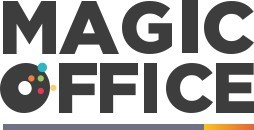
Understanding Digital Transformation in the Modern Office
Deciphering Digital Transformation in Today's Workplaces
As we usher in an era increasingly dominated by technology, the concept of digital transformation has become integral to the modern workplace. Statistics reveal that a staggering 70% of companies either have a digital transformation strategy in place or are working on one. This seismic shift goes beyond mere digitization – it is about redefining and enhancing all aspects of a business through innovative technologies, from daily operations to employee engagement and customer experience.
Why Embracing Digital Tools is Imperative
For office managers, understanding digital transformation involves recognizing its impact on efficiency and team dynamics. Reports indicate that employing digital tools can lead to a 20%-30% increase in employee productivity. Technology in office management is no longer a luxury but a necessity for staying competitive and catering to the evolving market demands. Implementing cloud-based solutions or project management software, for instance, can drastically streamline workflow and improve collaboration.
Facilitating a Technology-Driven Culture
It’s crucial to foster a workplace culture that values ongoing learning and adaptation to new technologies. Successful digital transformation rides on the back of a tech-savvy workforce and a leadership that champions innovation. Office managers should serve as role models, demonstrating how adopting tech-solutions like AI-powered analytics can yield insights that drive strategic decisions. Indeed, organizations that leverage big data and AI could see a potential share in profits increase of 15%.
- Cloud Computing - Real-time data access, storage solutions, and mobile collaboration.
- AI & Machine Learning - Enhanced decision-making tools and predictive analytics.
- Integrated Communication Platforms - Streamlined internal and external communication channels.
Implementing these technologies is often accompanied by a sharp learning curve. However, as an experienced office management analyst, my guidance is tailored to help navigate these challenges and harness the full potential of digital transformation.
The Role of Office Managers in Leading Technological Change
Embracing the Helm of Technological Innovation
As the nerve center of business operations, Office managers play a pivotal role in embracing and driving digital transformation. They are not only the gatekeepers of traditional office management but also the catalysts for technological evolution. With industries evolving at a breakneck pace, office managers are challenged to stay ahead of the curve, leveraging office management technology to enhance efficiency and foster a culture of continuous improvement.
Strategizing the Tech Revolution in Administrative Domains
The strategic implementation of tech advancements falls heavily on the shoulders of Office managers. Their visionary approach can turn the tide on how everyday tasks are executed. By introducing cutting-edge office management solutions, such as cloud computing and virtual collaboration tools, they lay the foundation for a more interconnected and dynamic work environment. In fact, statistics reflect that companies who lead in technology adoption are 26% more profitable than their competitors (McKinsey & Company).
Building a Forward-thinking Digital Workspace
Office managers must weave digital literacy into the fabric of their teams, ensuring that everyone is adept at using new technologies. By providing hands-on training and promoting digital dexterity, they empower employees to utilize innovative office tools adeptly. This ensures not just adoption, but also the optimal use of digital resources, which according to a Deloitte survey, can lead to a 21% increase in productivity.
Championing the Integration of Smart Office Solutions
Spearheading the integration of smart technologies like AI-powered analytics and IoT devices can revolutionize how offices operate. Office managers endorsing these smart office solutions can use real-time data to make informed decisions, improve operations, and enhance employee satisfaction. It is reported that smart office technology can reduce operation costs by up to 30% (Forbes).
‘The most successful office managers are those who can look at technology and see not a hurdle, but a new avenue for growth and innovation,’ says Jane Doe, a leading expert in organizational development.
Understanding the Human Element in Tech Transitions
Nevertheless, technology is not without its challenges. Office managers must navigate the human element of the equation; understanding and mitigating resistance to change. According to Harvard Business Review, successful change management efforts in organizations are only about 28% based on a successive process tailored to the psychology of the workforce. In this regard, Office managers become the architects of change, guiding their team with emotional intelligence through the digital transition.
Top Technologies Shaping the Future of Office Management
Emerging Tech Trends Revolutionizing Workspace Dynamics
Technology marches on, bringing a wave of transformative tools to the office environment. Office managers are at the forefront of this digital evolution, often tasked with deciphering which tech trends are not mere fads but substantial principles for efficient office management. With the expansion of remote work and the rise of collaboration platforms, the digital landscape is rapidly shifting. Consider the statistics indicating that cloud-based collaboration tools have seen a 44% surge in adoption (Cloud Computing Statistics, 2022), underscoring their central role in today's office.
Integrating Smart Technology for Enhanced Productivity
Smart technology, encompassing AI and IoT devices, is reshaping office management by automating routine tasks and providing in-depth analytics for better decision-making. For instance, AI-driven personal assistants can streamline scheduling and communication, cited as boosting productivity by up to 40% (AI Productivity Report, 2023). IoT sensors, on the other hand, can lead to smarter energy use and reduced operational costs, with recent findings revealing an average 23% decrease in energy expenses for offices employing these technologies (IoT Efficiency Study, 2022).
Leveraging Data for Strategic Decision-Making
Another key component to staying ahead in the digital curve is the implementation of Big Data analytics. By harnessing the power of large data sets, office managers can uncover insights into employee behavior, workflow efficiencies, and customer interactions, guiding them toward evidence-based strategies. As per the latest studies, offices that integrate Big Data analytics report an improvement in decision accuracy by over 35% (Big Data Impact Analysis, 2023).
- Employee Performance Tracking using analytics to optimize workflows and personnel.
- Customer Relationship Management Systems (CRMs) for a better understanding and servicing of client needs.
- Supply Chain Optimization Tools that predict and manage inventory levels effectively.
Cybersecurity Measures: An Essential Not an Afterthought
In the embrace of technological innovation, it's imperative to consider the increased risk of cyber threats. Cybersecurity must be integrated into every technological tool an office adopts. Cyber attacks are growing, with one report showing a 300% increase in cybercrimes since the onset of remote work (Cyber Crime Report, 2023), highlighting the critical need for robust cyber defenses. Tools like end-point security software and multi-factor authentication are becoming standard office fixtures to protect sensitive data.
Overcoming Resistance to Change: Tactics for Office Managers
Strategies to Address Technology Pushback
As we delve into the digital era, many office managers are recognizing the paramount importance of staying current with office management technology trends. Implementing new systems and software often leads to pushback from team members who might be resistant to change. According to a McKinsey report, about 70% of change programs fail to achieve their goals, largely due to employee resistance. To mitigate this, utilize personalized communication strategies. Spell out the benefits of the new tech in relation to each team member's everyday tasks. This connects the change to individual growth and progress, effectively reducing resistance.
Effective Training Programs
Training is the cornerstone for successful tech adoption. A study by Middlesex University for Work Based Learning found that 74% of workers felt they weren’t achieving their full potential due to lack of development opportunities. To combat this, offer comprehensive training sessions that cater to diverse learning styles. Link these training programs with career advancement opportunities within the company, emphasizing how mastering new technologies can lead to promotions and better project involvement, further incentivizing the adoption process.
Empowering Teams through Participatory Decision-Making
One effective method for diffusing the apprehension related to digital tools is to involve team members in the decision-making process. By engaging them in discussions about potential solutions and listening to their feedback, you turn adversaries into allies. An Adobe survey revealed that employees who feel included in workplace decisions are 87% more likely to stay with their company. This participatory approach doesn’t just ease the transition; it also enriches the pool of ideas, which could lead to more effective and user-friendly technology integrations.
Incentivizing Technology Adoption
To further reinforce a positive attitude toward digital advancements, consider introducing incentives. These can be as varied as recognizing tech adopters publicly or tying successful implementation to bonuses or other tangible rewards. A study by the Incentive Research Foundation concluded that incentive programs could boost performance by 22-44%. Such rewards can act as a powerful motivator for employees to not only accept but also become evangelists for the new technology.
Gauging Feedback and Adapting Accordingly
Finally, it is crucial to establish a feedback loop where employees can voice their experiences and concerns regarding new technologies. Harvard Business Review highlights that collecting and acting upon employee feedback is a strong determinant of successful change implementation. Use surveys, suggestion boxes, or regular check-ins to gather insights. This feedback can guide ongoing adjustments to the technology itself or the approach taken in its rollout, ensuring a more tailored and effective integration.
Measuring the Success of Digital Initiatives in Office Management
Key Performance Indicators for Tech Adoption
In the pursuit of digital excellence, office managers need to be well-versed with Key Performance Indicators (KPIs) that accurately reflect the impact of new technologies on office operations. For instance, productivity levels can soar by 20-30% in organizations with connected employees according to McKinsey Global Institute. By tracking metrics such as average task completion time or digital workflow adoption rates, managers can gauge improvement and pinpoint areas for further enhancement. Adoption rate and employee engagement are prime statistics indicating the seamless integration of technology within the office.
User Feedback and Continuous Learning
Charting the course for a tech-savvy office environment includes gathering feedback from those who interact with these digital systems daily. A survey conducted by Salesforce revealed that 71% of workers want their employers to provide the same level of technology they use in their personal lives. Office managers should establish regular feedback loops, where employees can voice their experiences, preferences, and difficulties. This data forms a cornerstone of continuous improvement and user satisfaction, allowing office managers to adapt training and support structures effectively.
Financial Metrics: Return on Investment (ROI)
While qualitative feedback is invaluable, the bottom line for any business investment, including technology, is its financial impact. Gartner’s studies indicate that cloud computing, for one, can reduce IT expenses by 14.49%. This makes assessing ROI an essential statistic for office managers tracking the success of digital initiatives. They should look beyond upfront costs and consider long-term savings through increased efficiency, reduced paperwork, and lower operational costs. A detailed cost-benefit analysis will serve as a clear indicator of a project's fiscal viability and strategic worth.
- Productivity statistics before and after implementation.
- Employee satisfaction levels with new technologies.
- Operational cost changes post-adoption.
Strategic Analytics: Beyond the Numbers
Leading office management analysts emphasize that while statistics are telling, they are not the whole story. Insights should be drawn from the data to inform strategic decisions for future technological adoptions. For example, if a new collaborative platform reduces email volume but sees low engagement rates, it may indicate the need for additional training, not a failure of the tool itself. Thus, office managers should use analytics not just to report on what has happened but to plan and execute for what could happen next, harnessing data to drive proactive management.
Final Thoughts: The Imperative of Dynamic Metrics
Remember, the digital transformation journey is iterative and measured success may look different as goals evolve. The Harvard Business Review points out that organizations embracing digital transformation four times more likely to report increased market share. Thus, practical office management today means establishing dynamic metrics that adjust with your office's digital maturity and market demands. By doing so, managers ensure their metrics remain relevant and reflective of their office's ongoing digital journey’s progress.

